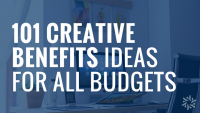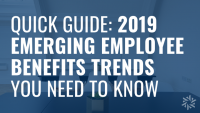Organizations and employees around the country are paying more attention to benefits, and for good reason. It should be no surprise then that given all of the legislative changes, this open enrollment season is an opportunity to educate employees like never before. Studies show that when employees have a better understanding of the benefits being offered to them, they rate higher satisfaction levels and use their coverage more appropriately. Formulating a communication and education strategy for benefits will help ensure that your employees grasp the significance of the investment and become better health care consumers.
Benefits communication
A communication strategy for benefits is just as important as a marketing strategy for your business. A strategy for expressing the relevance and significance of your benefits package helps “sell” the benefits to your employees as part of their overall compensation, just as you may sell your services to customers. Benefits are intended to help recruit and retain talent, and therefore how and when they are communicated is crucial to enhancing an employment experience, the health of your staff and your return on investment.
Employees learn differently
This concept is not foreign in the classroom, but it seems to be something we forget when we get out into the “real world.” Just as there were different ways to learn in school, the same is also true when it comes to learning about benefits. Insurance can be complicated. The design in which your benefits package is communicated will largely determine how your employees use their coverage and how they feel about it.
The 3 learning styles
There are three main learning styles. While we all have aspects of each style, one is usually more prominent.
- Auditory: Auditory learners can understand subtle changes in voice. They generally must hear things to have the best chance of learning, and usually remember about 75% of what was said. Auditory learners like in-person meetings, listening to a recording, story-telling and working in small groups with discussion.
- Visual: Visual learners can visualize and organize information well. They focus on the “big picture” and usually respond to PowerPoint presentations and handouts. The way these items looks is just as important if not more important than the use of them, so they prefer charts, graphs and images to focus on.
- Kinesthetic: Kinestheic learners learn by doing, touching and feeling. Because this is difficult when talking about benefits, a somewhat intangible product, they learn by relating to experiences and practices. Examples include case studies, stories and specific examples. In addition, providing them something to touch or hold in their hands, like a promo pen, stress ball, or information packet can help them learn the presented material.
Think about how you’ve presented benefits material in the past. Did you hand each employee a packet of information to look through and send them on their way? Here are some other ways to reach employees depending on their style for learning:
- Online enrollment
- Open enrollment meetings with open discussion
- PowerPoint presentations
- Tutorials
- Stories and case studies about how to use insurance
- One-on-one meetings
Provide your employees with 3 ways to learn more about benefits so that regardless of their learning style, you have designed a communication strategy that highlights the world-class package you were smart to invest in!
To learn more about how AFG can help you design a communication strategy for benefits, please contact Lauren Simonetti or Dean Austin at 248-594-5550.


